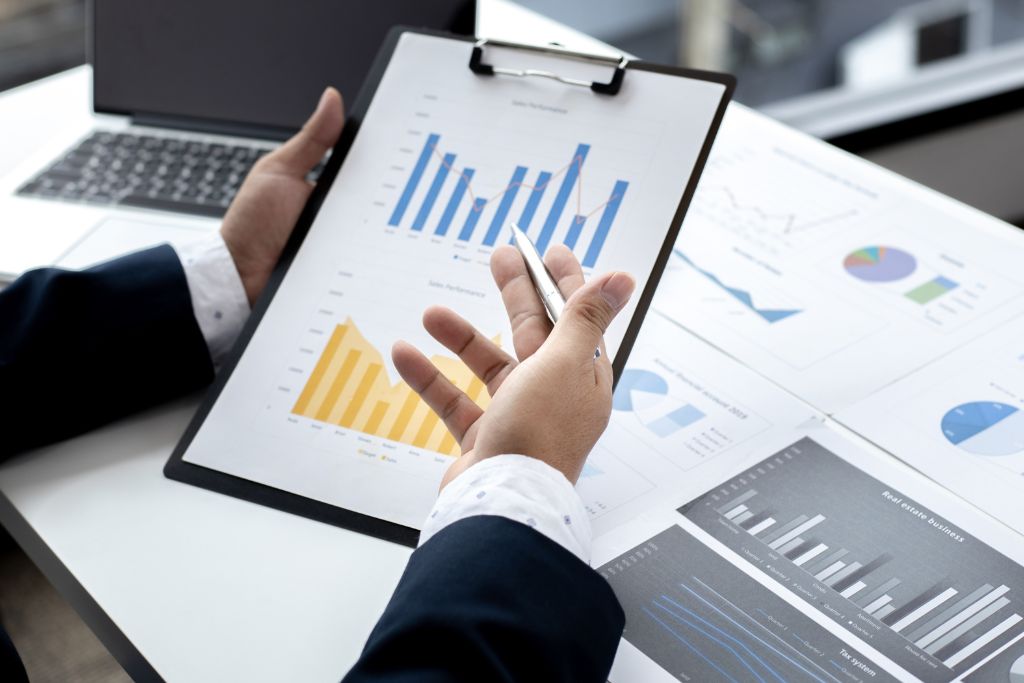If you’re venturing into social media marketing, it’s crucial to understand and calculate your engagement rate on platforms like Instagram. This will help you assess the effectiveness of your promotional efforts and gain valuable insights into your audience’s level of interaction with your content.
In this article, we’ll explore the analytical process of calculating your engagement rate on Instagram, taking into account factors such as post type and follower size. Making informed decisions based on these calculations can enhance your engagement rates and boost your overall success on the platform.
To calculate your engagement rate on Instagram, you need to consider a few key metrics. These metrics include likes, comments, and shares on your posts. By analyzing these interactions, you can determine how engaged your audience is with your content.
Here’s a step-by-step guide on how to calculate your engagement rate:
- Choose a specific period: Decide on a timeframe for which you want to calculate your engagement rate. It could be a week, a month, or any other duration that suits your needs.
- Identify the total number of likes, comments, and shares: Go through your posts from the selected period and tally up the total number of likes, comments, and shares you received. Consider all types of posts, including photos, videos, and stories.
- Calculate the average engagement per post: Divide the total number of likes, comments, and shares by the total number of posts you made during the selected period. This will give you the average engagement per post.
- Determine your follower count: Take note of your total number of followers on Instagram. This will be used in the next step to calculate your engagement rate.
- Calculate your engagement rate: Divide the average engagement per post by your follower count and multiply the result by 100 to get your engagement rate as a percentage. This formula gives you a clear understanding of how engaged your audience is relative to the size of your follower base.
By following these steps, you can easily calculate your engagement rate on Instagram. This information will help you assess the impact of your content and make informed decisions to enhance your engagement rates.
Regularly monitor and analyze your engagement rate to track your progress and adapt your strategies accordingly. With a strategic approach and attention to key metrics, you can optimize your Instagram presence and succeed tremendously in your social media marketing efforts.
Table of Contents
- 1 Understanding Engagement Rate on Instagram
- 2 Identifying Key Metrics for Engagement Calculation
- 3 Calculating Total Engagement on Instagram
- 4 Determining Engagement Rate Formula
- 5 Analyzing Engagement Rate by Post Type
- 6 Evaluating Engagement Rate by Follower Size
- 7 Improving Engagement Rate on Instagram
- 8 BONUS
- 9 Frequently Asked Questions
- 9.1 How Can I Determine if My Engagement Rate on Instagram Is Good or Bad?
- 9.2 Is It Possible to Calculate the Engagement Rate for Individual Instagram Stories?
- 9.3 What Are Some Common Factors That Can Affect Engagement Rate on Instagram?
- 9.4 Can the Engagement Rate Vary Based on the Time or Day of the Week I Post on Instagram?
- 9.5 Are Any Tools or Resources Available to Help Track and Analyze the Engagement Rate on Instagram?
Understanding Engagement Rate on Instagram

The engagement rate on Instagram can be understood as the measure of interaction and audience engagement with a user’s content on the platform. It is an essential metric for businesses and influencers to assess the effectiveness of their Instagram strategies. By analyzing engagement rates, one can gain insights into their content’s level of interest and involvement among followers.
Measuring brand loyalty is one aspect that can be addressed by examining engagement rate benchmarks on Instagram. A higher engagement rate indicates a stronger connection between the audience and the brand or influencer. This suggests that users actively engage with the content, showing genuine interest in what is being shared. Therefore, measuring engagement rate is a valuable tool for assessing brand loyalty.
Various factors are considered to determine the engagement rate, such as likes, comments, shares, and saves. These actions represent different forms of user interaction with the content. An accurate representation of the engagement rate can be obtained by calculating these metrics relative to the number of followers or impressions received per post.
Benchmarking against industry standards allows businesses and influencers to evaluate their performance compared to others in similar fields. This analysis provides strategic insights into areas where improvements can be made to enhance audience participation and increase brand loyalty on Instagram.
Identifying Key Metrics for Engagement Calculation

This discussion aims to explore the identification of relevant engagement metrics and the accurate calculation of engagement.
To effectively measure engagement, it is crucial to identify key metrics that align with the objectives of the analysis, such as likes, comments, shares, and click-through rates.
Additionally, calculating engagement accurately requires a data-driven approach that considers quantitative and qualitative indicators to understand audience interaction comprehensively.
Relevant Engagement Metrics
One crucial aspect to consider when analyzing Instagram engagement is the measurement of relevant metrics. Measuring these metrics allows businesses to gauge their engagement strategies’ effectiveness and identify improvement areas.
Some relevant engagement metrics include:
- Likes: The number of likes a post receives indicates how many users found it exciting or engaging.
- Comments: Comments reflect user interactions and provide insights into their thoughts and opinions.
- Shares: When users share a post, it amplifies its reach and indicates a higher level of engagement.
- Click-through rate (CTR): CTR measures the percentage of users who click on a link within a post, indicating interest in further engagement.
Calculating Engagement Accurately
To accurately assess user interaction with Instagram posts, it is crucial to employ precise methods for measuring and evaluating relevant engagement metrics.
Calculating engagement strategies involves a data-driven approach considering various factors such as likes, comments, shares, and saves.
Measuring social media engagement requires understanding the platform’s algorithms and user behavior patterns.
One standard method used to calculate engagement on Instagram is dividing the total number of engagements (likes, comments, shares) by the total number of followers or impressions. This provides a percentage representing the audience interaction level with a specific post or account.
However, it is important to note that this metric may not capture a post’s true impact or reach since it does not consider other forms of engagement, such as direct messages or website clicks.
Therefore, when calculating engagement strategies on Instagram, it is essential to use multiple metrics and consider all user interaction aspects to understand audience engagement levels comprehensively.
Calculating Total Engagement on Instagram

By summing up the total number of likes and comments received on a post, one can calculate their engagement rate on Instagram. Calculating total engagement is crucial for individuals and businesses alike as it provides insights into the effectiveness of their content and allows them to benchmark their performance against industry standards.
To accurately measure influencer engagement, several factors need to be considered:
- Likes: Likes represent the number of users who appreciate a post. They serve as an initial indicator of interest and can be seen as a basic form of engagement.
- Comments: Comments indicate higher levels of engagement as they require more effort from users. They provide valuable feedback, spark conversations, and demonstrate a deeper connection with the content.
- Shares: Shares signify that users find the content compelling enough to share with their followers. This amplifies reach and showcases strong audience connections.
- Saves: Saves show that users value the content enough to save it for future reference or inspiration. It indicates high relevance and utility.
By analyzing these metrics collectively, one can understand their overall engagement rate on Instagram. This data-driven approach allows individuals and businesses to strategize effectively by identifying areas for improvement, setting realistic goals, and measuring progress over time.
Furthermore, comparing these results with industry benchmarks enables better performance evaluation of competitors or influencers within the same niche.
Determining Engagement Rate Formula
Determining the engagement rate formula involves carefully considering various factors such as likes, comments, shares, and saves. These elements are essential in measuring users’ interaction and interest in a particular post on Instagram. Engagement rate calculation methods can vary depending on an individual or brand’s goals and objectives.
One commonly used formula for calculating engagement rate is to divide the total number of engagements (likes, comments, shares, and saves) by the total number of followers and then multiply by 100 to express it as a percentage.
Engagement plays a crucial role on Instagram, indicating how well a post resonates with its audience. It is an essential metric for brands and influencers to evaluate their content strategy and understand if their messages are effectively reaching their target audience. By tracking engagement rates over time, individuals can assess which types of posts generate more interaction and adjust their content accordingly. Higher engagement rates often indicate a stronger connection between the creator and followers.
Analyzing Engagement Rate by Post Type
This discussion will analyze the different engagement rates between video and photo posts, the performance of carousel posts, and the metrics used to measure engagement on Instagram Stories.
We can identify which format is more effective in attracting audience interaction by comparing video and photo content engagement levels.
Additionally, evaluating the performance of carousel posts will provide insights into their ability to captivate users and encourage them to engage with multiple images within a single post.
Lastly, examining the various metrics used to measure engagement on Instagram Stories will shed light on how effectively this feature engages with users.
Video Vs. Photo Engagement
Comparing video and photo engagement on Instagram requires an analysis of the respective levels of user interaction with these two types of content. Understanding how users engage with videos versus photos is crucial for developing a successful social media strategy.
Videos tend to have higher engagement rates than photos due to their dynamic nature and ability to capture attention. Videos often receive more likes, comments, and shares than photos, indicating higher user interest and involvement.
On the other hand, photos may perform better in reach and visibility as they are easier to consume and require less time commitment from viewers. Additionally, photos can convey a specific message or aesthetic appeal more effectively due to their static nature.
Carousel Post Performance
Carousel posts on Instagram have gained popularity among brands and influencers due to their ability to showcase multiple images or videos in a single post. Analyzing the effectiveness of carousel posts and optimizing engagement is essential for maximizing the impact of this feature.
To evaluate carousel post effectiveness, metrics such as reach, impressions, likes, comments, and shares should be considered. Understanding which types of content resonate most with your audience can help optimize carousel engagement. It is important to analyze data on engagement rates across different types of content within the carousel, identifying trends and patterns that lead to higher levels of interaction.
Story Engagement Metrics
To evaluate the effectiveness of stories on Instagram, it is essential to consider metrics such as views, taps forward, taps back, exits, and replies. These metrics provide valuable insights into user engagement and can help measure the success of story engagement strategies.
- Views: The number of times users have viewed a story.
- Taps forward: The number of times users tap to view the next part of a story.
- Taps back: The number of times users tap to rewatch a previous part of a story.
- Exits: The number of times users exit a story before completing it.
Evaluating Engagement Rate by Follower Size
Analyzing engagement rates based on the size of followers is a method commonly employed to evaluate the effectiveness of an Instagram account. By evaluating engagement rate by engagement type, users can gain insights into which types of content resonate with their audience and drive higher levels of interaction. This allows them to refine their content strategy and focus on creating more engaging posts.
In addition to evaluating engagement rates by engagement type, comparing engagement rates across different industries is important. This analysis provides valuable benchmarking information that helps users understand how well their account performs relative to others in their industry. It can also provide insights into industry-specific trends and best practices for driving higher levels of engagement.
When comparing engagement rates across different industries, it is crucial to consider factors such as target audience demographics, content preferences, and competitive landscape. This ensures that the analysis is accurate and relevant.
Analyzing engagement rates by follower size and comparing them across different industries enables Instagram users to make data-driven decisions about their content strategy. By understanding which types of posts drive higher levels of engagement and how they stack up against competitors in their industry, users can optimize their efforts for tremendous success on the platform.
Improving Engagement Rate on Instagram
One approach to enhancing user interaction on the Instagram platform involves optimizing content strategy and making data-driven decisions based on audience preferences, industry benchmarks, and competitive landscape. By implementing effective strategies for boosting engagement, users can increase their audience interaction and improve their overall performance on Instagram.
Here are four strategies that can be employed to boost engagement on Instagram:
- Consistent posting schedule: Regularly publishing high-quality content is key to capturing and retaining audience attention. By establishing a consistent posting schedule, users can create anticipation among their followers and encourage them to engage with each new post.
- Engaging captions: Compelling captions that prompt users to take action or ask questions can significantly increase engagement. Encouraging followers to leave comments or tag friends in the comments section can help drive conversations and extend the post’s reach.
- Utilizing relevant hashtags: Using appropriate hashtags relevant to the shared content increases discoverability, helping attract a broader audience beyond existing followers. Popular hashtags related to the industry or niche can also help connect with like-minded individuals within the community.
- Leveraging user-generated content (UGC): Encouraging followers to create and share content related to a brand or product boosts engagement and builds customer trust and loyalty. Reposting UGC acknowledges and appreciates customer contributions and helps build a sense of community around the brand.
BONUS
Gain valuable insights into your social media performance and growth with OnlySocial’s indispensable Analytics function. Our centralized Report Center allows you to monitor and analyze data across multiple platforms, while Detailed Posting Reports provide in-depth analytics on your content performance. Dive deeper into individual platform reports to understand the nuances of each social media channel. With a friendly graphical interface, tracking your metrics has never been easier. Sign up for a commitment-free 7-day trial today.
Frequently Asked Questions
How Can I Determine if My Engagement Rate on Instagram Is Good or Bad?
When evaluating the engagement rate on Instagram, it is important to determine if the obtained rate is considered good or bad. Benchmarking against industry standards and analyzing trends can provide insights for assessing the performance of engagement rate.
Is It Possible to Calculate the Engagement Rate for Individual Instagram Stories?
Calculating the engagement rate on Instagram is crucial for measuring story engagement. However, determining the engagement rate for individual Instagram stories poses a challenge as the platform does not provide this specific metric.
What Are Some Common Factors That Can Affect Engagement Rate on Instagram?
Factors affecting the engagement rate on Instagram include content quality, timing of posts, use of hashtags, and interaction with followers. Strategies to increase engagement rate include creating compelling visuals, engaging captions, and actively responding to comments.
Can the Engagement Rate Vary Based on the Time or Day of the Week I Post on Instagram?
The time and day of posting can influence engagement rate fluctuations on Instagram. Studies suggest that posting frequency impacts engagement, with higher rates observed during weekdays and specific hours, indicating the importance of strategic timing for maximizing engagement.
Are Any Tools or Resources Available to Help Track and Analyze the Engagement Rate on Instagram?
Top Instagram engagement tracking tools provide valuable insights to help analyze engagement rates effectively. These tools offer features like measuring likes, comments, and shares, calculating the engagement rate per post, and providing comparative analysis over time.




